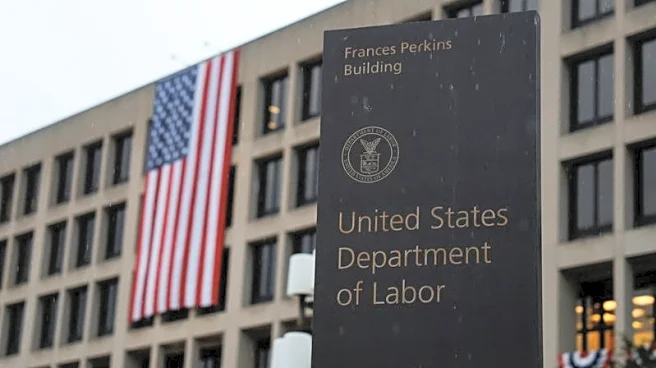What's Happening?
The U.S. Labor Department has announced that economic data releases will be paused if a government shutdown occurs, raising concerns among investors about the potential delay of the monthly employment report scheduled for Friday. This delay could complicate the Federal Reserve's decision-making process regarding interest rates, as the central bank relies heavily on government data to guide its monetary policy. With government funding set to expire at midnight on Tuesday, there is little indication that Congress will reach a temporary spending agreement. The potential shutdown is causing strategists to advise clients to prepare for increased market volatility by adjusting their investment portfolios.
Why It's Important?
The potential delay in economic data due to a government shutdown could have significant implications for financial markets and the Federal Reserve's policy decisions. Investors may face uncertainty in assessing economic conditions, leading to increased market volatility. The lack of data could also cloud the Fed's view, making it challenging to justify deviations from its projected rate path. This situation underscores the importance of reliable government data in maintaining market stability and guiding monetary policy. The shutdown could also impact traders with Treasury derivatives positions, prompting them to hedge their exposure, further contributing to market volatility.
What's Next?
If the government shutdown occurs, the delay in economic data releases could extend beyond the employment report, potentially affecting other key indicators such as the Consumer Price Index. The Bureau of Labor Statistics may publish delayed reports quickly once the shutdown ends, but the immediate impact on market sentiment and investor decision-making could be significant. Investors will likely focus more on Federal Reserve officials' comments in the absence of data, which could lead to diverse interpretations and increased uncertainty. The situation may prompt strategists to recommend maintaining cash reserves and adjusting portfolios to mitigate risks.











